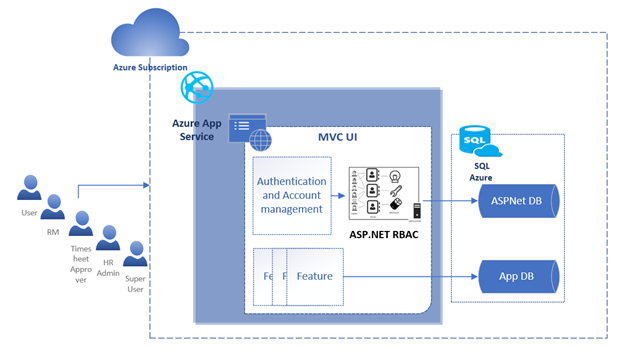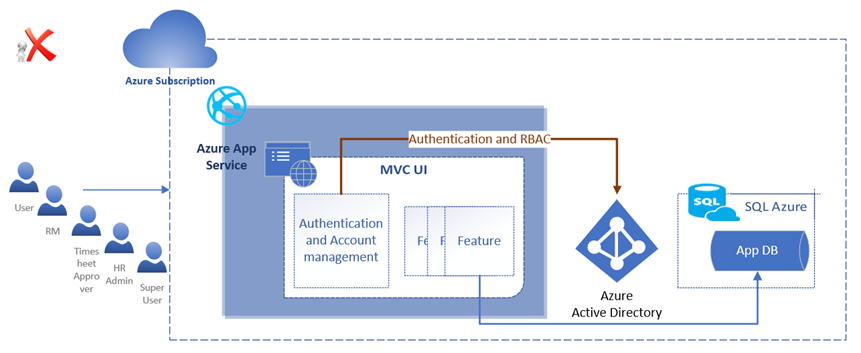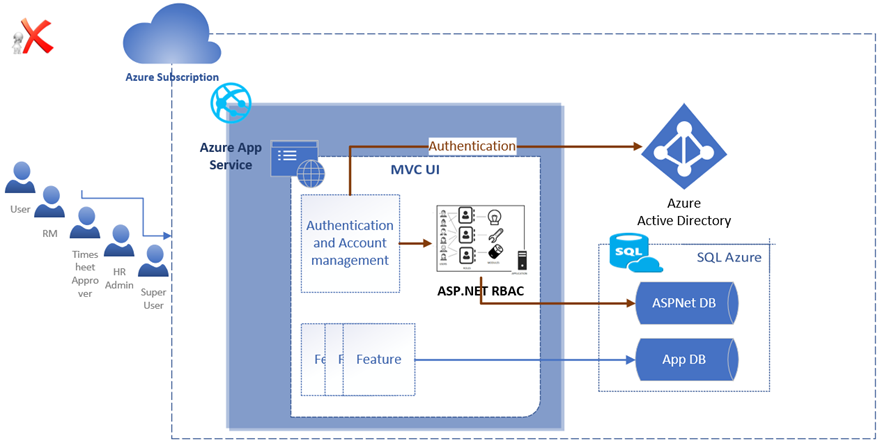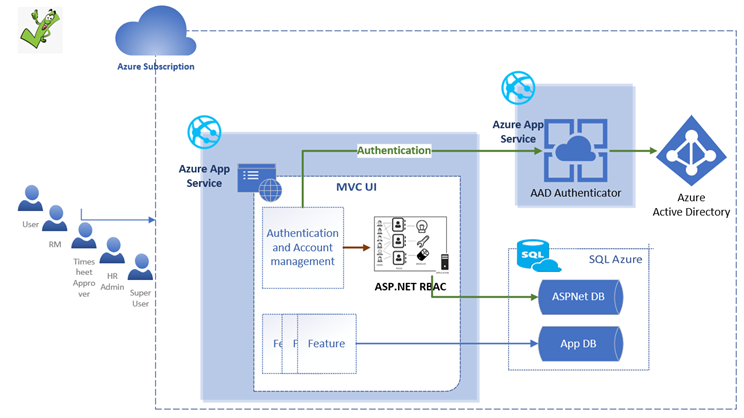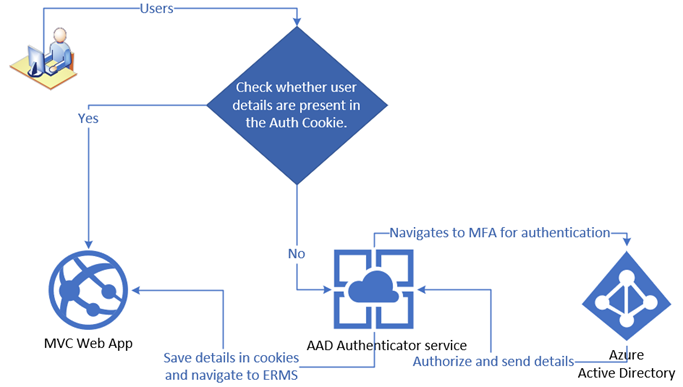This blog will explain how a short-staffed team overcame security issues in a critical legacy application by combining modern authentication with legacy MVC frameworks. This allowed the team to upgrade the application to meet enterprise security standards without disrupting the users.
Background
I managed an in-house application, ERMS, developed a decade ago with MVC and forms authentication. The forms authentication used custom user management with SQL Server database. The skilled developer created a productive application that served the needs of the HR, managers, and employees. ERMS was developed for AIS in-house use and had lower priority than the customer engagements. Over the years, it’s been stable, requiring few changes. When changes were required, we had to juggle resources to accomplish them. Figure 1 shows the application architecture before the change.
Challenge
The application was developed before the standard security practices. Over time, it became non-compliant. ERMS needed to be upgraded the legacy forms authentication to Azure AD authentication. This required sweeping changes to the way the users logged in to the application, which would be a significant undertaking. The solution was not challenging, but it must be done with minimal downtime and minimal resources. In addition to this, ERMS uses custom roles that do not map to the Active Directory roles.
Solution
We considered several ways to solve this problem, as outlined below.
Upgrade Authentication and Authorization
The first option was to remove forms authentication and custom role management to use Active Directory, as shown in Figure 2. Equivalent AD roles would have to be created. The code at various layers needed to be updated to refer to the corresponding AD roles. This was not a viable option as it is risky with many changes.
SCALING CLOUD FOR GLOBAL ENGINEERING
Looking to migrate your enterprise to the cloud? AIS can help you scale, reduce technical debt, and mitigate risk.
Upgrade Authentication and Use Legacy Authorization
Figure 3 shows another approach we explored to retain the existing role management and use Azure AD for authentication. This was a sensible fallback in the given context. That did not work as the User Principal in the HTTP request context was always not set, which would cause the authentication to break.
We learned two points from the failed trials. First, we should only attempt to upgrade the authentication but not touch the custom role management. Second, it was a resource-heavy effort to integrate Active Directory with custom role management in ERMS.
Using a Connector for Authentication
The solution that worked was to have a lightweight authenticator app that the ERMS application consumes to validate the users, as shown in the high-level flow in Figure 5. This authenticator service app would validate against Azure AD, and role management would stay the same. Figure 4 shows the solution overview.
The Right Approach
An independent authentication connector service and maintaining the existing role management are the key to the solution. This is a dependable approach if you are looking for a quick turnaround using minimal coding or resources.




